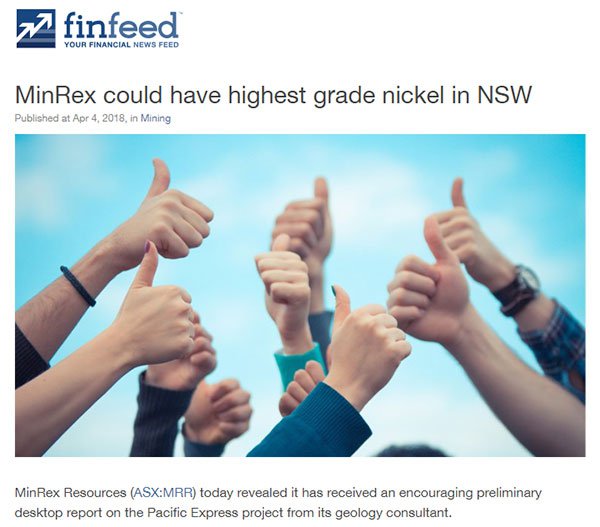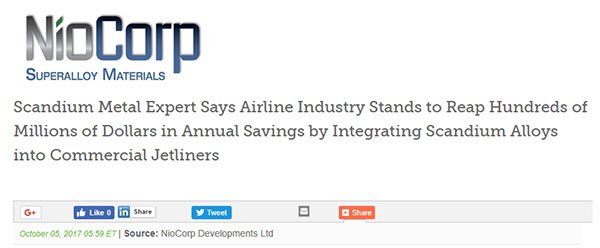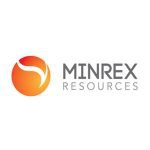Standalone Scandium Mine Potential in MRR’s Newly Acquired NSW Project
Hey! Looks like you have stumbled on the section of our website where we have archived articles from our old business model.
In 2019 the original founding team returned to run Next Investors, we changed our business model to only write about stocks we carefully research and are invested in for the long term.
The below articles were written under our previous business model. We have kept these articles online here for your reference.
Our new mission is to build a high performing ASX micro cap investment portfolio and share our research, analysis and investment strategy with our readers.
Click Here to View Latest Articles
It looks like diversified junior explorer MinRex Resources (ASX:MRR) got all it hoped for and more when it made the strategic decision to acquire three assets in NSW and WA that are prospective for cobalt, scandium, copper and nickel.
The three projects MRR is adding to its metals portfolio via the acquisition of Clean Power Resources are the Pacific Express Nickel-Cobalt-Scandium Project in north-eastern NSW, and the Knight and Dragon Nickel-Cobalt Projects in the Goldfields-Esperance region of WA.
The Pacific Express project in NSW has confirmed cobalt-scandium-nickel laterite mineralisation in legacy drill holes that were used to model and report a legacy JORC (1996) Indicated Resource of 4.6Mt at 0.09% cobalt, 40 g/t scandium and 0.61% nickel.
The two WA projects, Knight and Dragon, lie in a highly prospective area that includes St George Mining’s (ASX:SGQ) Mt Alexander prospect where high-grade mineralisation has been confirmed.
Initial due diligence results are now in for one of the three projects...and they are even better than could have been hoped for. In fact, the due diligence team has uncovered a prospective game-changer for the Pacific Express Project...
Legacy metallurgical test-work has verified the potential to develop a standalone scandium deposit.
The legacy testwork has been overwhelmingly clear in confirming that there is material exploration upside for Pacific Express, which has already highlighted a 159ppm scandium assay, at the Houston Mitchell Prospect within Pacific Express.
The legacy data is based on historic scandium leaching undertaken 20 years ago by Jervois Mining (ASX:JRV) on high-grade samples (60ppm scandium) which resulted in a 70% scandium recovery rate.
At the time JRV was in a in a collaborative joint-venture with the CSIRO to examine how scandium impacted aluminium alloys. Also noteworthy is a 2002 progress report on the JV which highlighted significant early interest by aviation giant, Boeing (NYSE:BA), in scandium alloys’ ability to mitigate against corrosion for a new aircraft design.
Sixteen years on, Boeing and Airbus potentially require up to 150tpa to make aluminium-scandium alloys to build up to 38,000 new aircraft over the next two decades, which we will look at in more detail shortly.
Of course MRR has a lot of work to do to come in Boeing’s calculations, so investors should seek professional financial advice if considering this stock for their portfolio.
It's also important to note that Pacific Express’ 0.61% nickel grade is potentially one of the highest in NSW, compared with other nickel-cobalt laterite deposits.
The quality of past results has convinced MRR’s Board to authorise the geology team to now use the legacy data to model a JORC (2012) compliant Resource.
These encouraging results come at an excellent time in regards to the commodity price cycle. Speciality and base metals are in an upcycle that is gaining momentum. The cobalt price, for one, has just hit a decade-high US$95,000/t on the London Metal Exchange.
There is a sharp increase in demand for specialty metals like cobalt and scandium, thanks to their use in lithium-ion batteries and the new technologies powered by these rechargeable batteries. Certainly if Boeing has a vested interest, scandium and thus MRR could take flight sooner rather than later.
All the latest from,

We last updated you on MinRex Resources (ASX:MRR) and its growing metals portfolio on March 26 with the article, MinRex Boosts Metals Portfolio with Cobalt Acquisitions. This was the same day MRR announced the acquisition of 100% of the issued capital of Clean Power Resources Pty Ltd (CPR).
With that acquisition, MRR added three of CPR’s high-quality project areas to its metals portfolio — the Pacific Express Nickel-Cobalt-Scandium Project in north-eastern NSW and the Knight and Dragon Nickel-Cobalt Projects which lie about 50 kilometres west of Leonora in WA, as seen on the map below.
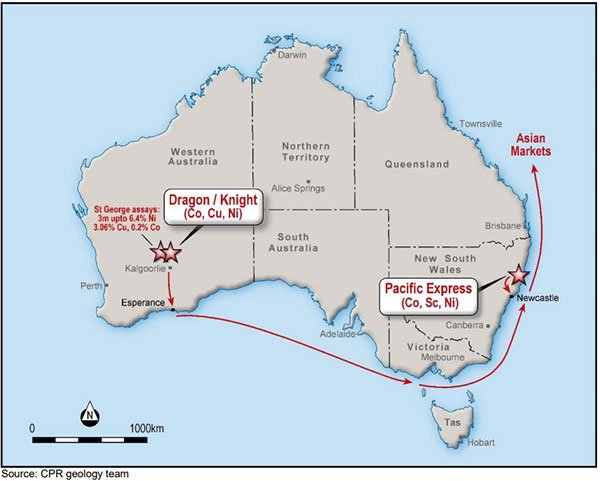
Each of these projects come with promising drill results and are located close to supporting infrastructure and key ports — Newcastle in NSW and Esperance in WA.
MRR’s acquisition of these highly prospective assets delivers exposure to in-demand specialty metals cobalt and scandium in the first instance, as well as nickel and copper.
Analysis of the legacy metallurgical evidence is overwhelmingly clear in confirming that there is material exploration upside for the Pacific Express project.
Pacific Express Project
The Pacific Express Project in NSW was the first of the three Clean Power Resources’ projects to undergo pre-acquisition due diligence.
The project hosts cobalt-nickel-scandium laterite mineralisation with a legacy JORC (1996) Indicated Resource of 4.6Mt at 0.09% cobalt, 40 g/t scandium and 0.61% nickel.
Because historic reporting from the area focused on nickel, the cobalt and scandium-rich horizons of the project were largely overlooked. This provides an obvious opportunity for MRR in its exploration efforts at the site, especially now that cobalt and scandium prices are on rise.
MRR released an update today on its pre-acquisition due diligence on the Pacific Express Project. The update took a closer look at the scandium mineralisation, particularly at the prospect of developing a standalone deposit at the Houston Mitchell prospect, which is located within the tenure. This follows the discovery of legacy metallurgical reports from circa 20 years ago at Houston Mitchell.
The due diligence, which has already highlighted a 159ppm scandium assay, uncovered legacy metallurgical results suggesting the Houston Mitchell prospect could be developed into a standalone scandium deposit.
That determination was based on historic scandium leaching undertaken two decades ago by Jervois Mining (ASX:JRV) on high-grade samples (60ppm scandium) from the Houston Mitchell prospect which resulted in a 70% scandium recovery rate.
This was on the back of a collaborative joint-venture research and development initiative with the CSIRO which examined how scandium impacted aluminium alloys. Notably, a 2002 progress report on the JV highlighted significant early interest by Boeing (NYSE:BA), in scandium alloys ability to mitigate against corrosion for a new aircraft design — Boeing’s proposed sonic cruiser.
Today, Boeing and Airbus potentially require up to 150tpa to make aluminium-scandium alloys to build up to 38,000 new aircraft over the next two decades, which are lighter than current alloys and will facilitate moderating fuel usage.
MRR also did test-work on bulk samples from Hurll’s Hill, which is just outside the tenure boundary and is interpreted to contain similar geology sequences. It returned recovery rates up to 96% cobalt and 94% nickel, clearly highlighting the exploration upside.
The Hurll’s Hill bulk samples also demonstrated the cobalt head-grade could be increased up to 4,500ppm cobalt by screening or sizing to separate the upper limonitic zone and rejecting the marginal ore to waste.
Here is the Pacific Express Project mapped out, including the Houston Mitchell and Hurll’s Hill prospects:
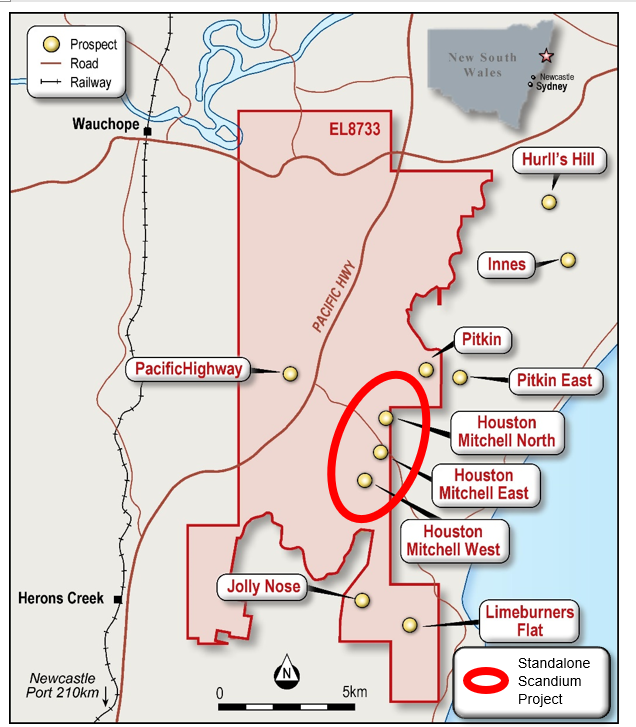
Overall, MRR conducted four rounds of metallurgical tests at Houston Mitchell and Hurll’s Hill. The findings are summarised below.
Houston Mitchell prospect samples (within tenure)
- Testing
completed on a high-grade sample (60ppm scandium) to assess the recovery of
scandium with encouraging early results of up to 70%.
- Based on
these results, the geology team believes Houston Mitchell has the potential to
be developed into a standalone scandium deposit, especially with the
application of modern exploration and extraction techniques.
Hurll’s Hill prospect samples (outside tenure)
- Possibility
of increasing the head grade up to 4,500ppm cobalt by screening or sizing to
separate the upper limonitic zone and rejecting the marginal ore to waste.
- Chemical
extractions of metals varied vertically and ranged up to 96% for cobalt and 94%
for nickel.
- A general
observation from the time is that Hurll’s Hill has significant potential to be
developed into a major scandium, cobalt, nickel laterite project.
- As
pre-selected targets within the Pacific Express project have similar geology to
Hurll’s Hill, there is material exploration upside.
In addition to the above, MRR had already identified Pacific Express’ high grade nickel deposits. In fact, Pacific Express’ 0.61% nickel grade is potentially one of the highest in NSW, compared with other nickel-cobalt laterite deposits. For example, 0.59% for the $853 million-capped Clean Teq Holdings (ASX:CLQ), 0.24% for the $217 million-capped Australian Mines (ASX:AUZ) and 0.13% nickel for the $22 million-capped Platina Resources (ASX:PGM).
MRR is still an early stage play in comparison, so investors are advised to take a cautious approach to any investment decision made with regard to MRR.
Here is a peer comparison with other NSW nickel/cobalt grades:
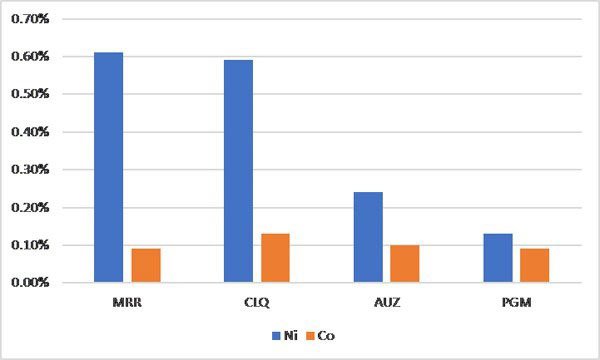
This is was discussed in the following article from finfeed.com (a related entity of S3 Consortium):
Boeing’s long-term interest in scandium
Back in 2002, Jervois Mining, in a collaborative joint-venture research and development initiative with the CSIRO’s Manufacturing Science and Technology division in Adelaide, examined how scandium impacted aluminium alloys.
The JV released a progress report that highlighted significant early interest by global aviation giant, Boeing (NYSE:BA), in scandium alloys ability to mitigate against corrosion for a new aircraft design (sonic cruiser).
Sixteen years on, demand for scandium is set to grow significantly moving forward, with Boeing and Airbus potentially requiring up to 150tpa to make aluminium-scandium alloys to build up to 38,000 new aircraft over the next two decades
Moving forward, the dynamic has changed materially, with demand for scandium set to grow strongly over the next two decades. Potentially, if Boeing/Airbus predictions to build up to 38,000 new aircraft by 2040 are realised, the aviation industry alone may require 150tpa of scandium to make aluminium alloys.
Boeing’s early interest in scandium alloys could very well be just the start for the aviation industry, with future take-up rates set for significant growth over the next two decades.
Analysis by specialty metals expert Dr Andrew Matheson, found that integrating aluminium-scandium alloys could allow aircraft manufacturers to boost annual revenue by hundreds of millions of dollars per year through lower materials costs, lower direct manufacturing costs, and higher manufacturing throughput.
The scandium-contained aluminium alloys can deliver some US$9 million in value savings to airline operators over the life of every mid-body. This is due to metal’s allowing for the manufacture of lightweight jets, reducing or eliminating the use of rivets, and reducing fuel consumption.
The following article provides an overview of the expected uptick in demand for scandium from the airline industry.
Knight and Dragon projects
The other projects that MRR is acquiring as part of its acquisition of Clean Power Resources, the Knight and Dragon Projects, are located in the Goldfields-Esperance region of WA — about 50 kilometres west of Leonora.
The Knight Project and the Dragon Project are not far from the $37 million capped St George Mining’s (ASX:SGQ) Mt Alexander prospect. High-grade mineralisation has been confirmed at Mt Alexander, including three metres at 6.4% nickel, 3.6% copper and 0.2% cobalt. This certainly gives the region’s reputation a boost as a highly prospective mining destination.
Meanwhile, the $38 million capped Talisman Mining (ASX:TLM) hold land that’s contiguous to the Knight and Dragon projects, and those top-shelf tenements produced 38,500 tons of nickel between 2008-2013 at an average grade of 2.44%.
That being the case, MRR’s geology team is feeling confident and plans to fast-track a desktop review and assessment of legacy data compliant with the 2012 JORC code as soon as all acquisition due diligence has been executed.
Although confidence may not translate to long-term success here so investors should seek professional financial advice before making an investment decision.
Given the data is it working with, could we see an upcoming Resource upgrade for MRR?
What’s next?
For the Pacific Express Project’s Houston Mitchell prospect, MRR will thoroughly review all historic metallurgical data and test-work.
Any future metallurgical testing will use modern testing techniques that will ensure maximum metal recovery from the lateritic ore. This should boost confidence that a viable scandium deposit can be developed. Notably, peers such as Clean Teq (ASX:CLQ) and Platina Resources (ASX:PGM) have developed scandium extraction techniques which have achieved recovery rates of 98% and 90% respectively.
MRR will summarise and properly catalogue all the legacy metallurgical studies of Pacific Express to help fast track the pre-feasibility study once exploration and reserve definition is complete.
It also plans to commence work on modelling legacy data to ascertain if an inferred Resource that complies with the JORC 2012 code can be generated.
From there, if all goes to plan, MRR will design and formulate preliminary drilling campaigns for the most prospective target areas within the Pacific Express tenure.
General Information Only
This material has been prepared by StocksDigital. StocksDigital is an authorised representative (CAR 000433913) of 62 Consulting Pty Limited (ABN 88 664 809 303) (AFSL 548573).
This material is general advice only and is not an offer for the purchase or sale of any financial product or service. The material is not intended to provide you with personal financial or tax advice and does not take into account your personal objectives, financial situation or needs. Although we believe that the material is correct, no warranty of accuracy, reliability or completeness is given, except for liability under statute which cannot be excluded. Please note that past performance may not be indicative of future performance and that no guarantee of performance, the return of capital or a particular rate of return is given by 62C, StocksDigital, any of their related body corporates or any other person. To the maximum extent possible, 62C, StocksDigital, their related body corporates or any other person do not accept any liability for any statement in this material.
Conflicts of Interest Notice
S3 and its associated entities may hold investments in companies featured in its articles, including through being paid in the securities of the companies we provide commentary on. We disclose the securities held in relation to a particular company that we provide commentary on. Refer to our Disclosure Policy for information on our self-imposed trading blackouts, hold conditions and de-risking (sell conditions) which seek to mitigate against any potential conflicts of interest.
Publication Notice and Disclaimer
The information contained in this article is current as at the publication date. At the time of publishing, the information contained in this article is based on sources which are available in the public domain that we consider to be reliable, and our own analysis of those sources. The views of the author may not reflect the views of the AFSL holder. Any decision by you to purchase securities in the companies featured in this article should be done so after you have sought your own independent professional advice regarding this information and made your own inquiries as to the validity of any information in this article.
Any forward-looking statements contained in this article are not guarantees or predictions of future performance, and involve known and unknown risks, uncertainties and other factors, many of which are beyond our control, and which may cause actual results or performance of companies featured to differ materially from those expressed in the statements contained in this article. S3 cannot and does not give any assurance that the results or performance expressed or implied by any forward-looking statements contained in this article will actually occur and readers are cautioned not to put undue reliance on forward-looking statements.
This article may include references to our past investing performance. Past performance is not a reliable indicator of our future investing performance.

